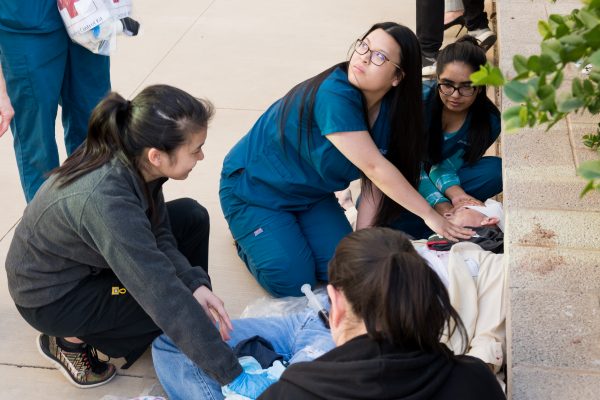ATSU-SOMA hosts U.S. Army for Stop the Bleed training
Posted: February 6, 2019
On Monday, Jan. 28, Major Michael Hay of the U.S. Army 6th Medical Recruiting Battalion provided Stop the Bleed training to faculty and first-year students at A.T. Still University’s School of Osteopathic Medicine in Arizona (ATSU-SOMA). Participants learned to administer care to someone with life-threatening bleeding in the critical moments before first responders arrive. Stop the Bleed is sponsored by the U.S. Department of Homeland Security and the American College of Surgeons.
All 106 first-year students at ATSU-SOMA participated in the training. After Major Hay provided classroom instruction, students were directed to the University’s back patio, where faculty had staged a mass-casualty simulation. Students provided care to 40 standardized patient actors with simulated injuries. After a few minutes, the Mesa Fire Department arrived to take over, giving students a feel for how long they should expect to wait for help from first responders.
First-year medical students do not typically have the opportunity to learn these lifesaving skills. Because ATSU-SOMA students are assigned to community health centers in their second year of medical school, they will be able to train other healthcare providers and community members to respond to emergency situations.
“This program is a perfect way for first-year medical students to learn a practical, hands-on skill that could save a life – not four years from now when they graduate, but tonight, on their way home,” says Christina Weaver, DO, assistant professor of clinical sciences at ATSU-SOMA. “I am so proud of our students. Aside from learning how to recognize and control life-threatening bleeding, the vast majority of them knew their patient’s name and demonstrated excellent humanistic skills in the face of disaster. They kept their composure under pressure, and through it all remembered who they truly are – future osteopathic physicians.”